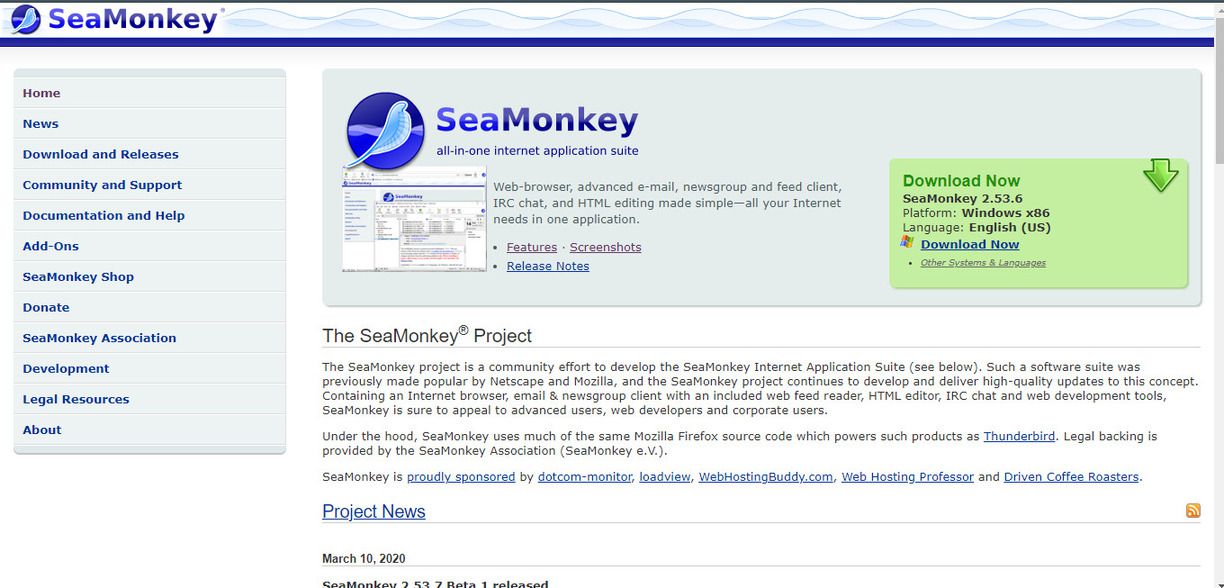

- #Export seamonkey passwords download zip#
- #Export seamonkey passwords software#
- #Export seamonkey passwords password#
- #Export seamonkey passwords windows#
#Export seamonkey passwords download zip#
The download zip file is now password-protected. Added support for Chromium-Based Edge Web browser. It's the same file format that Chrome Web browser exports the passwords from chrome://settings/passwords Added new file format to export the passwords: Chrome CSV File. Be aware that the 'Local State' file, located inside the 'User Data' folder, is needed for decrypting the passwords of Chrome 80 or later. #Export seamonkey passwords password#
Added support for the new password encryption of Chromium / Chrome Web browsers, starting from version 80. Added support for decrypting the encryption key of new Firefox profiles (AES-256 instead of 3DES). Fixed WebBrowserPassView to decrypt the new password encryption on Opera Web browser. Fixed to decrypt passwords of Firefox profile that uses both 3DES and AES-256. In order to save the passwords as 'Firefox import/export csv file', simply select the items you want to save (or press Ctrl+A to select all passwords), press Ctrl+S (Save Selected Items), choose 'Firefox import/export csv file'įrom the file type combo-box, type the filename to save and then click the 'Save' button to save the file. When you save the passwords in this file type, you can use the import feature of Firefox to import the saved passwords into Firefox: Added new file type to save the passwords list: 'Firefox import/export csv file'. On Google Chrome - passwords originally imported from Internet Explorer 7.0-9.0, cannot be decrypted. If you clear the history of Internet Explorer, WebBrowserPassView The history file of Internet Explorer to decrypt the passwords. On Internet Explorer 7.0-9.0, the passwords are encrypted with the URL of the Web site, so WebBrowserPassView uses. Support for that might be added in future versions. Currently, WebBrowserPassView cannot retrieve passwords from external hard-drive (Except of Firefox Web browser). #Export seamonkey passwords windows#
Older versions of Windows (Windows 98/ME) are not supported, because this utility is a Unicode application.
This utility works on any version of Windows, starting from Windows 2000, and up to Windows 10, including 64-bit systems. This tool can be used to recover your lost/forgotten password of any Website, including popular Web sites, likeįacebook, Yahoo, Google, and GMail, as long as the password is stored by your Web Browser.Īfter retrieving your lost passwords, you can save them into text/html/csv/xml file, by using the 'Save Selected Items' option (Ctrl+S). Internet Explorer (Version 4.0 - 11.0), Mozilla Firefox (All Versions), Google Chrome, Safari, and Opera. WebBrowserPassView is a password recovery tool that reveals the passwords stored by the following Web browsers: BrowsingHistoryView - View browsing history of your Web browsers.  Saved Password Locations For Popular Windows Applications. To fill your passwords with 1Password instead of Safari, delete your saved iCloud Passwords. Safari will continue to fill saved passwords even after you turn off the built-in password manager.
Saved Password Locations For Popular Windows Applications. To fill your passwords with 1Password instead of Safari, delete your saved iCloud Passwords. Safari will continue to fill saved passwords even after you turn off the built-in password manager. 
To prevent Safari from interfering with 1Password, turn off the built-in password manager in Safari. Step 3: Turn off the built-in password manager in Safari
#Export seamonkey passwords software#
Open 1Password on your desktop or mobile device and click the + button to add items.Īfter you’ve imported your information into 1Password, delete the unencrypted CSV file, and turn on any backup software you turned off earlier. If you have any credit cards, bank accounts, addresses, or other items saved in Safari, copy them manually into 1Password.
Click inside the dotted rectangle and select the CSV file you saved to your desktop earlier. If you’re importing personal data, choose the Personal or Private vault. Choose the vault you want to import your data into. Click your name in the top right and choose Import. In Safari or another browser, sign in to your account on. Click the Passwords icon, then enter the password you use to log in to your computer. Open Safari and choose Safari > Preferences. Then follow these steps on your computer: Step 1: Export your iCloud Passwordsīefore you export your iCloud Passwords, temporarily turn off any backup software you may be using, so the unencrypted export file isn’t backed up. 
Importing is only available on and requires a 1Password account. Credit cards, addresses, and other items will not be imported.Įxporting iCloud Passwords requires Safari 15 or later.
Your iCloud Passwords will be converted into 1Password logins. You can transfer your passwords from Safari into 1Password on .ġPassword can import your iCloud Passwords from Safari.








 0 kommentar(er)
0 kommentar(er)
